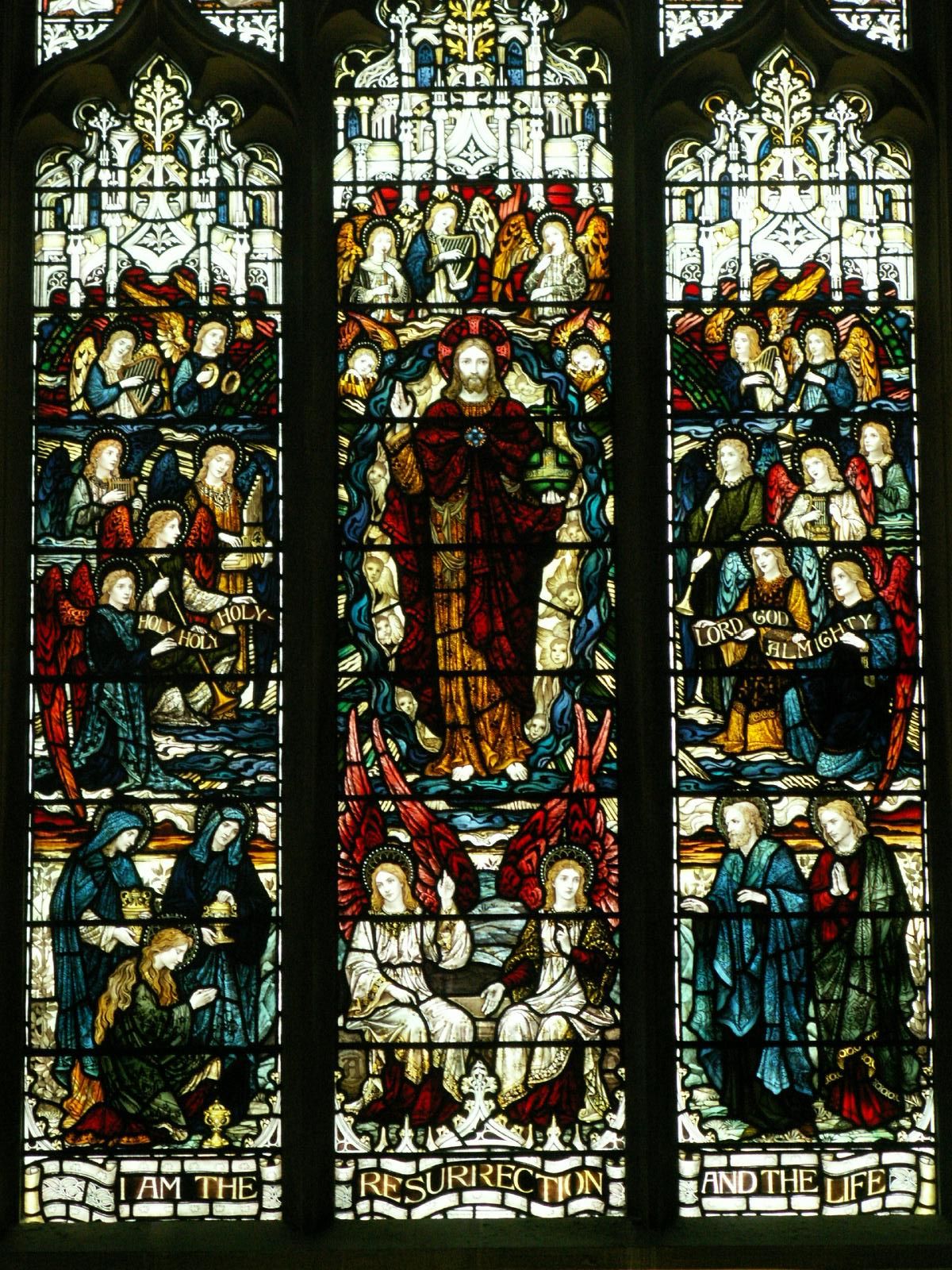History of St. John's
The town was founded by Bishop de Lucy in the 12th century; there has been a church here for centuries. The current building incorporates many features from previous structures but is now typically late Victorian, re-designed and renovated by the prominent church architect, Sir Arthur Blomfield. The outer walls are almost all standing on the foundations of earlier churches – its footprint hasn’t changed much in six or seven centuries – but Blomfield created a higher roof and clerestory windows to flood the nave with light, the great pillars, and arch to the chancel.
In 1898 this cost about £6000, mostly donated by Mr Herbert Henry Walford of nearby Arlebury Park House. A petition was raised by the Parochial Parish Council for Mr Walford 'A benefactor of the parish' and a bronze tablet (to the right of the altar) records his generosity.
 The stained-glass windows are also very good. ‘In 1902, due to the further generosity of Mr H H Walford of Arle Bury...’, the main window depicting the Glorified Christ was installed, together with the reredos showing The Last Supper. The window was designed by J Powell & Sons, owners of the famous Whitefriars Glass Works, famous English glassmakers, leadlighters and stained-glass window manufacturers: nothing but the best!
The stained-glass windows are also very good. ‘In 1902, due to the further generosity of Mr H H Walford of Arle Bury...’, the main window depicting the Glorified Christ was installed, together with the reredos showing The Last Supper. The window was designed by J Powell & Sons, owners of the famous Whitefriars Glass Works, famous English glassmakers, leadlighters and stained-glass window manufacturers: nothing but the best!
The window and reredos in the Lady Chapel were installed by the Marx family, previous owners of Arlebury. Curiously enough, Francis Marx, who died in 1876 following a hunting accident with the famous Hampshire Hunt of which he was Secretary, is buried with members of his family in Tichborne, at St Andrew’s rather than St John’s. He was also one of a group of local gentlemen who swore on oath that they believed the famous Tichborne Claimant was genuine ... but the trial decided otherwise!
Other stained-glass windows on the South (sunny) side of the church commemorate members of other notable families, most recently the Hankins and Lloyd Georges.
Memorials on the walls also record other Alresford worthies, including (on the north wall), the children of William Harris, who founded Arlebury (then called New Place) in the 1770s. All five children died before their parents, reflecting mortality rates amongst young people then. Both William and Jenny, his wife, lived into old age – as quite often happened, if you could just get through your childhood years! All are buried under the nave although their memorial stone was moved during the restoration to the floor of the passage through to the church hall, where it can still be seen.
‘We will remember them’. The dead of two World Wars are also recorded on tablets by the blocked South door and their biographies can be read in binders held in the library on the right as you enter through the west door.
There is a pleasant and versatile 2 manual pipe organ. Parts of it are nearly two hundred years old. At the far end of the south aisle you can see some of the massive bass organ pipes and bellows arm that powered the instrument before electrification. It now needs further repairs but such specialist work is not cheap.
The ring of eight bells is also famous. Some are ancient but they were added to in 1811 and engraved with patriotic verses, the texts of which you can read just inside the church on the right of the archway.
Churchyard Footpaths
For information about the story of the footpaths in and around the churchyards of St. John's, please pick up a copy in the church (£5 donation) of Alresford's Church Paths by the late Peter L. Clarke.